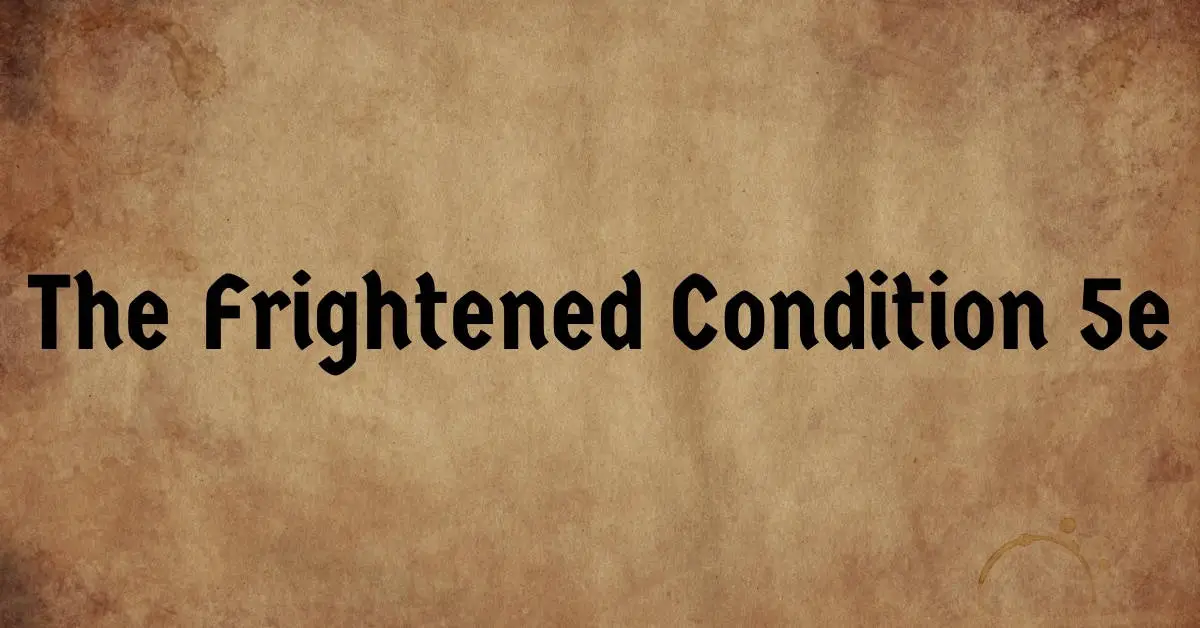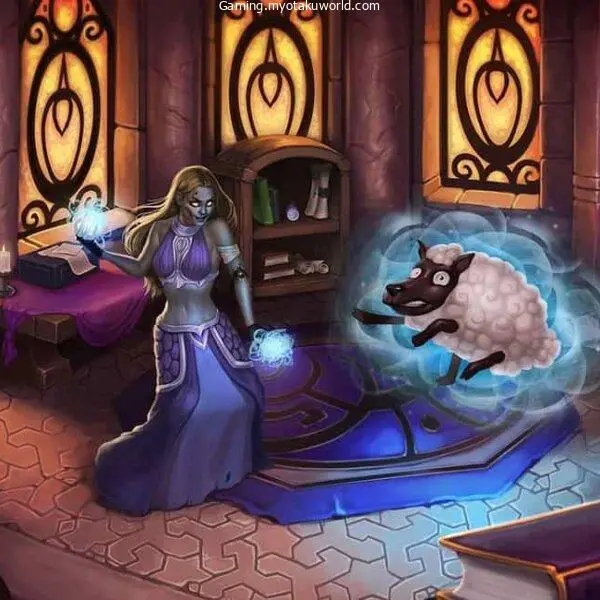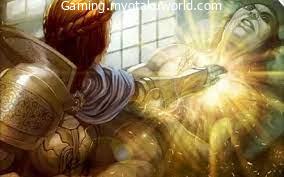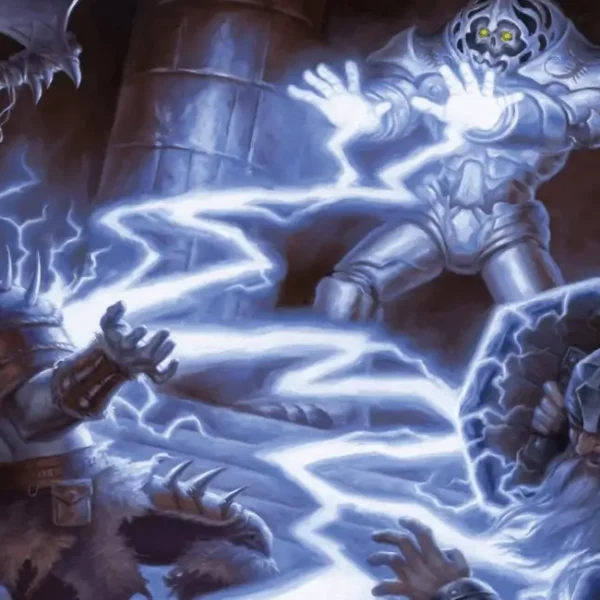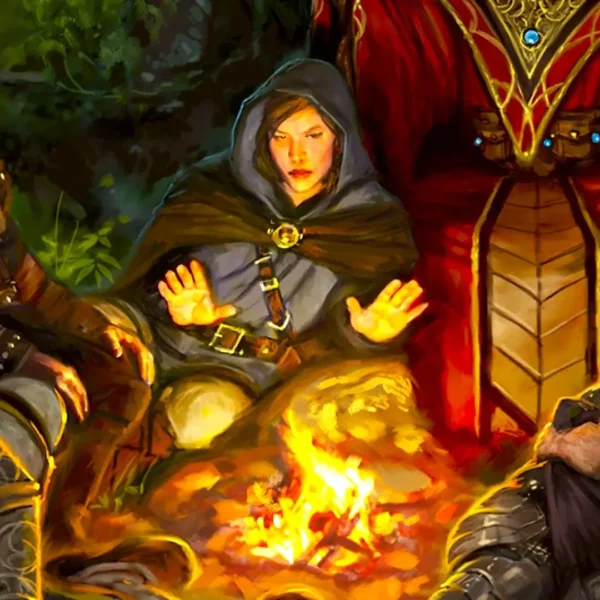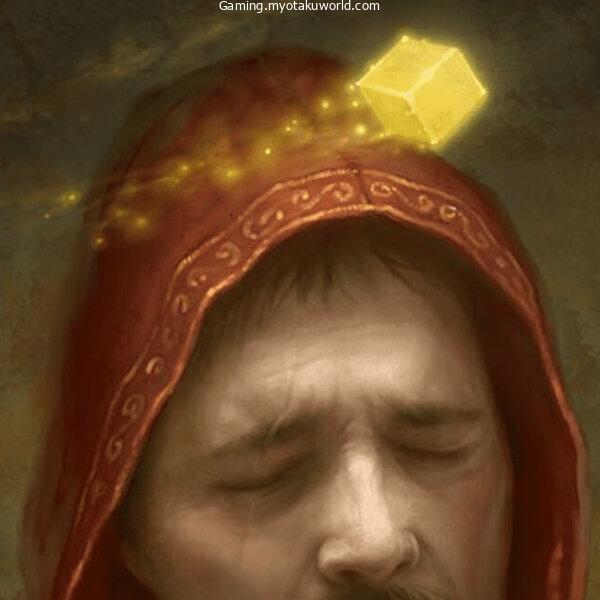When going on adventures, your group is likely to run into a number of scary monsters.
Some monsters could even make them run away in fear because they couldn’t handle what they saw.
This condition is called “frightened,” and it can add an amazing level of role-playing to your campaign!
What does it mean to be “fearful” or “scared” in Dungeons & Dragons 5e?
“Frightened” is a condition caused by either a creature’s ability or a spell. The target of the ability or spell must make a wisdom saving throw (the DC depends on the creature using the ability or casting the spell). On a failed save, the target suffers the following disadvantages:
- Disadvantage on ability checks and saving rolls while in line of sight of the creature it is afraid of
- Cannot willing move closer to its source of fear
Most of the time, fear comes from monsters, but DMs can use the “frightened” condition to make the game more realistic and interesting.
By using fear in more creative ways, players can make their characters more interesting and have a lot more role-playing opportunities.
What Does the Frightened Condition Do in D&D 5e?
Frightened is a condition in D&D 5e that makes it harder for a creature to fight or go on an adventure by making it scared.
It makes it harder to attack and pass Ability Checks, and it limits how a creature can move.
An effect, like a spell or a natural ability, can cause the frightened condition by making a creature feel scared.
This 5e condition has a couple of bad effects on a creature that has it.
On page 290 of the Player’s Handbook, it says that the Frightened Condition has two effects:
- When the thing that scares it is in its line of sight, it has a disadvantage on ability checks and attack rolls.
- The creature can’t move toward what scares it on its own.
In D&D 5e, that’s all Fear does.
How to Get Scared in D&D 5e:

- When you can see the source of your fear, you have a disadvantage on all attack rolls and skill checks.
- This stops you from moving closer to the thing you’re afraid of.
It’s important to pay attention to the words “line-of-sight” and “willingly.”
If the source of a creature’s fear leaves a line of sight, like when you use the Wall of Stone spell, your attack rolls, and ability checks are no longer at a disadvantage.
That is, as long as the thing that made the creature scared stays out of its line of sight.
Now, a creature that moves “willingly” is usually just moving at its normal speed. Spells and effects like failing the save for the thunder wave spell or the Pushing Attack maneuver for Battle Master Fighters make a creature move.
This means that a creature that is Frightened can still move closer to what is making it scared as long as it has to.
Players often ask if they can have an advantage over creatures that are scared or how they can do more. This is not what the Frightened Condition does.
When you’re scared, creatures don’t have the upper hand when they attack you, and it doesn’t stop you from moving.
You can still go as fast as you want when you turn, but not in the direction of what scares you.
How to Use Fear in Combat

Most of the time, you use the Frightened Condition in 5e during combat to hurt either monsters or player characters. Still, Game Masters can use Frightened as a powerful tool outside of battle as well.
Most of the time, the 5e Frightened Condition works best in combat. Stopping a creature from getting closer is a great way to take control of the battlefield.
Being at a disadvantage on attacks and ability checks makes it harder to do damage and stay alive.
Both monsters and player characters are affected by this.
Remember that as a player, you might have traits, abilities, or spells that make other creatures scared. It’s not just something GMs use. So you can help your party by making your enemies scared.
So, as a Game Master, you might want to use the Frightened Condition outside of combat as well.
Most players focus on the “disadvantage on attack rolls” part of Frightened but giving your players a disadvantage on Ability Checks is a different kind of threat.
Suddenly, it’s much harder to get through a dungeon or get past an obstacle.
For example, a big hole might only be passable by jumping from a platform to a platform that is just far enough apart to require a Strength (Athletics) check.
But on the other side of the pit is a scary statue that fills the room with magic that makes people scared.
If the player characters can’t fly (through spells or other means), being in the Frightened Condition makes it much more likely that they will miss a platform and take damage from falling.
That’s just one example, but you get the point. In D&D 5e, fear isn’t only useful in battle.
Monsters that Use Fear
| Monster | Challenge Rating | DC |
| Scarecrow (p. 268 Monster Manuel) | 1 (200 XP) | 11 |
| Sea Hag (p. 179 Monster Manuel) | 2 (450 XP) | 11 |
| Spectator (p. 30 Monster Manuel) | 3 (700 XP) | 13 |
| Banshee (p. 23 Monster Manuel) | 4 (1,100 XP) | 13 |
| Beholder (p. 28 Monster Manuel) | 13 (10,000 XP) | 16 |
| Nalfeshnee (p. 62 Monster Manuel) | 13 (10,000 XP) | 15 |
| Lich (p. 202 Monster Manuel) | 21 (33,000 XP) | 18 |
| Pit Fiend (p. 77 Monster Manuel) | 20 (25,000 XP) | 21 |
| Ancient Dragons | ||
| Black (p. 87 Monster Manuel) | 21 (33,000 XP) | 19 |
| Blue (p. 90 Monster Manuel) | 23 (50,000 XP) | 20 |
| Green (p. 93 Monster Manuel) | 22 (41,000 XP) | 19 |
| Red (p. 97 Monster Manuel) | 24 (62,000 XP) | 21 |
| White (p. 100 Monster Manuel) | 20 (25,000 XP) | 16 |
| Brass (p. 104 Monster Manuel) | 20 (25,000 XP) | 18 |
| Bronze (p. 107 Monster Manuel) | 22 (41,000 XP) | 20 |
| Copper (p. 110 Monster Manuel) | 21 (33,000 XP) | 21 |
| Gold (p. 113 Monster Manuel) | 24 (62,000 XP) | 24 |
What do Your Players Fear?

Your players don’t have to be scared only when they run into monsters or run into each other.
I like to have my players come up with a short list of “fears” for their characters. This makes them more real and fun to play as.
This doesn’t have to be too long, but flaws and fears are often left out of building characters. If you know me, you know that I’m all about making characters that are complete.
When your players are making their characters, ask them to include 3–5 things that their character is afraid of that are related to their backstory. If they can’t think of anything, here are some ideas:
- As a child, I almost drowned, and now I’m terrified of rivers, lakes, and oceans.
- Since I was a child, I’ve had nightmares about an old woman with long fingers reaching for me. I’m afraid to sleep alone because of this, just in case it wasn’t a dream…
- Spiders. I just HATE spiders.
- My brother once dared me to go down a mine shaft that had been closed down. When I went inside, he locked the door and left me there all night. I can’t stand being underground or feeling like I’m “locked in.”
- When I went for a nighttime walk, I ended up passing by a cemetery. Everyone thinks I’m crazy, but I know what I saw that night, and I’ll never go near one again.
- My mother used to tell me stories about monsters that ate people who went into the woods at night. I know that they are just tales… Really! I do! …
Once you know what each player is afraid of, you can use that fear to build up their character even when they are not in combat.
How to Use Fear Outside of Combat
Fear can be a great way to push your players or help them grow. Once you know what your players are afraid of, you can use it (carefully!) to create epic moments of tension or humour.
It’s always interesting when heroes have to face their fears. Whether it’s the brave explorer Indiana Jones.
(Snakes! Why do snakes always have to be the problem? or the cutely cautious Ron Weasely (Why does it have to be “follow the spiders”? Fear is powerful.)
Why couldn’t it be “follow the butterflies”?
Your adventurers should grow as people while they are out saving the world. Face their fears is a part of this.
Your main plot should give each of your characters chances to face their fears for the good of the group. This is the stuff that helps people grow as people.
For example, if a player is afraid of going underground, put an important clue in an abandoned mine and hint that only that player can find it.
You’ll also want to have a few smaller quests that lead up to a big jump in character development, so that the player feels like they’ve earned the moment and aren’t just being given it.
In these situations, you can either have the player roll a Wisdom check to see if their character would go or not, or you can let the rest of the party try to persuade them.
Using Fear for Role-Playing
It’s good to use fear to make combat more interesting, but it’s much better to use it to encourage role-play, character development, and teamwork between party members.
When a player runs into something they are afraid of, you can bet the other players will notice and ask why.
This leads to the characters talking about their pasts and getting closer. Something that every DM wants badly.
Once the player says why they are afraid, the rest of the group will probably try to help them get over it. This will lead to lots of great times, most of which will be funny.
FAQs
How Long Does the Frightened Condition Last?
In 5e, the Frightened Condition lasts as long as the spell, trait, or feature says it does, either for a set amount of time or until the creature makes a saving throw against the effect. In 5e, every effect that makes a creature scared has a set length of time. This is usually measured in minutes, but it could also say something like “until the start of your next turn.”
Does Frightened Break Concentration?
As written, No. 5e’s Frightened Condition does not break Concentration.To break concentration, you must cast another spell that needs concentration, take damage, or become unable to move or die. But the PHB also says that GMs may decide that certain effects not listed in the book, like clinging to the back of a dragon as it dives, could force a creature to make a concentration check. So, you could say that a creature might have to make a concentration check if it has a strong enough fear, like from something that isn’t natural like magic or abilities. Just remember that a creature doesn’t lose concentration just because it’s scared in 5e. This is how the rules are written.
Final Words
That’s all you need to know about the Frightened Condition to start using it in your 5e game.
Frightened is a condition in 5e that makes a creature’s attack rolls and ability checks worse and makes it unable to move toward the thing that’s making it scared.
Usually, it’s used in combat to slow down both player characters and monsters.
However, it can also be used while the party is exploring an area to make obstacles harder and add to the tension.
Lastly, there are many ways to get the Frightened Condition in 5e, and there are just as many ways to get rid of it.
